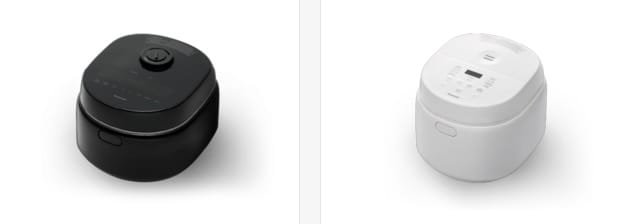“Looking for perfect rice every time? Discover the best rice cookers in Singapore in our 2022 review & buying guide!”
Rice is a staple in many Singaporean households, forming the backbone of various local dishes such as chicken rice, nasi lemak, and clay pot rice. Given its significance in daily meals, owning a reliable rice cooker Singapore is almost a necessity. A rice cooker simplifies the cooking process, ensuring consistent, perfectly cooked rice every time. Whether you are a busy professional, a student, or someone who enjoys home-cooked meals, investing in a rice cooker can save both time and effort. This article explores the significance of rice cookers in Singapore, the various types available, factors to consider before purchasing one, and maintenance tips to prolong its lifespan.
The Importance of Rice Cookers in Singaporean Homes
Singaporeans lead fast-paced lives, balancing work, studies, and family responsibilities. A rice cooker helps streamline meal preparation by automating the cooking process. Unlike traditional stovetop methods, a rice cooker eliminates guesswork and prevents overcooked or undercooked rice. With technological advancements, modern rice cookers also come with multiple functions, allowing users to cook a variety of grains, porridge, soups, and even steamed dishes.
Additionally, the humid climate in Singapore can affect rice storage, making proper cooking techniques essential for maintaining texture and flavor. A good rice cooker not only ensures even heat distribution but also keeps rice warm for extended periods, making it convenient for families with varying meal schedules.
Types of Rice Cookers Available
There are several types of rice cookers available in the Singaporean market, catering to different needs and budgets. Understanding the options can help buyers make informed decisions.
1. Conventional Rice Cookers
These are basic models that operate with a simple on-off mechanism. They use a heating plate to cook rice and automatically switch to the ‘keep warm’ mode once cooking is complete. They are affordable, easy to use, and suitable for individuals or small families.
2. Microcomputer-Controlled (Fuzzy Logic) Rice Cookers
These rice cookers use advanced technology to adjust temperature and cooking time based on the type and quantity of rice. They offer multiple cooking modes, such as quick cook, brown rice, porridge, and sushi rice. Their ability to make precise adjustments ensures superior rice texture and consistency.
3. Induction Heating (IH) Rice Cookers
IH rice cookers use electromagnetic fields to generate heat, ensuring even cooking. They allow precise temperature control, resulting in fluffier and more aromatic rice. Though more expensive than conventional models, they are ideal for those who prioritize quality and taste.
4. Multi-Function Rice Cookers
These are versatile appliances that go beyond cooking rice. They often feature slow cooking, steaming, baking, and even pressure-cooking functions. For Singaporeans living in compact apartments with limited kitchen space, a multi-function rice cooker can serve as an all-in-one cooking solution.
Factors to Consider When Choosing a Rice Cooker
Before purchasing a rice cooker, there are several factors to take into account to ensure you choose one that best suits your needs.
Capacity
Rice cookers come in various sizes, typically measured in liters or cups. A 1- to 2-liter cooker is suitable for individuals or small households, while a 3- to 5-liter capacity is ideal for larger families or those who frequently entertain guests.
Cooking Functions
Some rice cookers offer specialized settings for different types of rice, such as jasmine, basmati, or glutinous rice. If you enjoy experimenting with different rice varieties, selecting a model with multiple settings can enhance your cooking experience.
Ease of Cleaning
Removable, non-stick inner pots make cleaning effortless. Some models even come with detachable steam vents and dishwasher-safe components, reducing maintenance hassle.
Energy Efficiency
With rising electricity costs in Singapore, choosing an energy-efficient rice cooker can help reduce utility bills. Induction heating models tend to be more energy-efficient as they cook faster and retain heat better.
Portability and Design
For those living in small apartments or dormitories, compact and lightweight designs are preferable. Additionally, sleek and modern aesthetics can complement a stylish kitchen setup.
Maintenance Tips for Longevity
A well-maintained rice cooker can last for years. Here are some essential tips to keep it in good condition:
- Clean After Each Use – Residual rice and starch buildup can affect performance and lead to unpleasant odors. Wash the inner pot, steam vent, and exterior after each use.
- Avoid Using Metal Utensils – Metal spoons can scratch the non-stick coating of the inner pot. Use wooden or silicone utensils instead.
- Store in a Dry Area – Singapore’s humidity can encourage mold growth. Keep your rice cooker in a cool, dry place when not in use.
- Check for Wear and Tear – Regularly inspect the power cord and heating element for any signs of damage to ensure safety.
- Use the Right Rice-to-Water Ratio – Overfilling can lead to spillage and damage to the internal components. Follow manufacturer guidelines for optimal cooking results.
Conclusion
A rice cooker is an indispensable appliance in Singaporean households, providing convenience, efficiency, and consistency in meal preparation. With a variety of models available, choosing the right one depends on individual needs, budget, and cooking preferences. Whether you opt for a basic model or an advanced multi-function cooker, proper maintenance will ensure its longevity and performance. Investing in a high-quality rice cooker can elevate your home cooking experience, making every meal a delight. As Singaporeans continue to embrace modern kitchen innovations, the humble rice cooker remains a trusted companion in preparing delicious and comforting meals.



